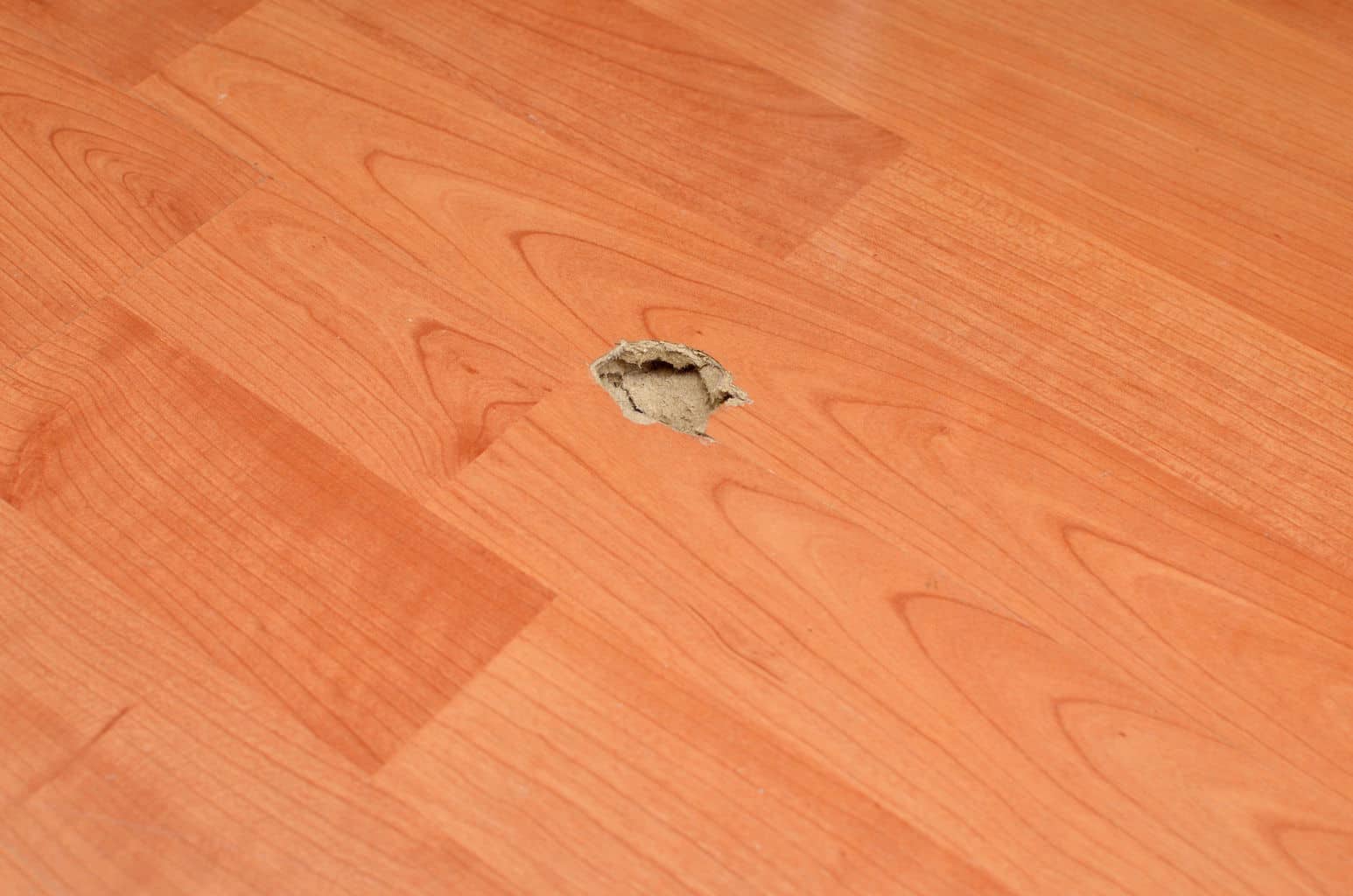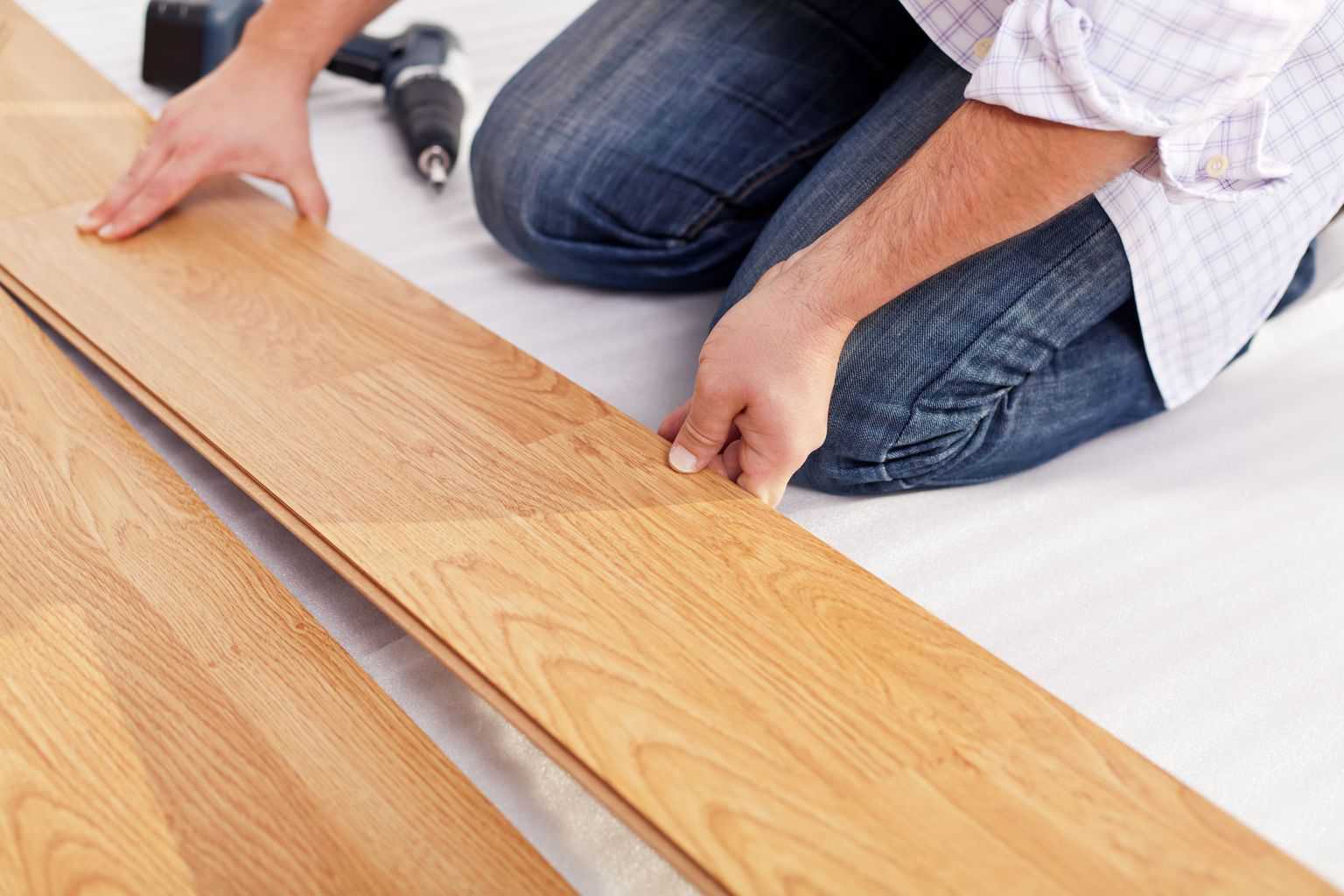When you're considering new flooring options, you'll probably hear that minor damage in laminate is more difficult to repair than it would be in engineered or natural hardwood because it uses a printed image instead of a piece of wood.
However, this doesn't mean that you're completely out of luck when you would rather pursue a laminate floor repair option instead of completely replacing it. We simply recommend researching different techniques that are more likely to work for a laminate floor.

7 Tips For Repairing Your Laminate Floor
If the floor isn't that old, it may be possible to replace badly damaged pieces with identical laminate.
If your laminate floor is installed in a high traffic area, you may have started noticing that there's a “center lane” that gets most of the wear and tear. The edges of the hallway floor aren't all that bad but the center is showing the signs of thousands of trips up and down the hallway by kids and large pets.
One thing that DIY enthusiasts can do if only part of a floor is showing signs of damage is buy just enough laminate to replace the damaged part of the floor. Then they can take advantage of laminate flooring's easy “click and lock” feature and use a little bit of glue to replace only the part that they need to.
Minor scratches can be "repaired" with paint and a little putty.
You aren't completely out of luck if you notice some minor scratches on your laminate floor even though it can't be repaired in the same way that a natural hardwood floor might. Many home improvement stores sell kits that can be used to repair laminate floor. These kits contain paint and a little putty or a crayon that can be used to fill in scratches and small dents. If you have a leftover piece of the laminate from the installation of your floor that you never bothered to throw out, take it into the hardware store and they may be able to help you find a repair kit that's as close of a match as possible.

Some types of damage can be caused by mistakes made during the installation process.
Poor installation can cause damage to the tongues, ends of boards, or the printed image. For this reason, we usually recommend setting aside boards that have trouble snapping easily into place and making sure you're cutting off ends of boards being used at the end of each row using methods that won't damage the image. Taking the time to make sure proper installation techniques are being used can protect the lifespan of laminate flooring by reducing the possibility that the edges and tops of the boards will deteriorate and “fray” over time. Boards that have already been damaged by improper installation should be removed and replaced as soon as you notice the damage.
Keep your eyes peeled for signs of mold and water damage.
This is something that often gets overlooked in discussions of maintaining and repairing a laminate floor. Like most organic-based flooring options, it's possible for laminate to suffer warping and mold problems due to hidden water deposits, especially if it has been poorly installed and water can slip down into the seams between segments. If this happens to your floor, it will be necessary to take it up to deal with the damage underneath and you may have to replace the flooring too. Signs of mold or water damage might include a bubbling effect in the laminate, slightly misaligned edges that might indicate the beginning of a warping problem, or blackened or discolored spots on the floor that keep reappearing or are difficult to clean using normal methods. If you notice these signs, call a professional who can handle the removal of hidden water deposits or mold because hidden mold can actually damage your flooring and your health if allowed to linger.

If in doubt, see if you can contact the professionals who installed the floors in the first place.
They may even be able to tell you if a laminate floor is still under warranty. Most flooring installation contractors also have experience with repairing damaged portions of a laminate floor. Some less reputable contractors may try to convince you that you should just go ahead and replace the entire floor, but you may not need to if only one small part of the floor has been damaged.

Damage to boards is usually easier and cheaper to deal with if you get started with the laminate flooring repair process as soon as you notice the signs. If laminate floor repair is handled early, it will rarely deteriorate to the point where you might have to replace the entire floor.

You made a good point when you said that taking the time to ensure proper installation can bring significant benefits to protecting the lifespan of laminate flooring. I will definitely let my parent know about that because they were the ones who have made a decision to replace the hardwood flooring with laminate flooring. Apparently, there has been a mistake with the installation of the first set of flooring, so they ended up cracking one after another. I hope that we can avoid the same mistake this time around. Thanks for the tips.